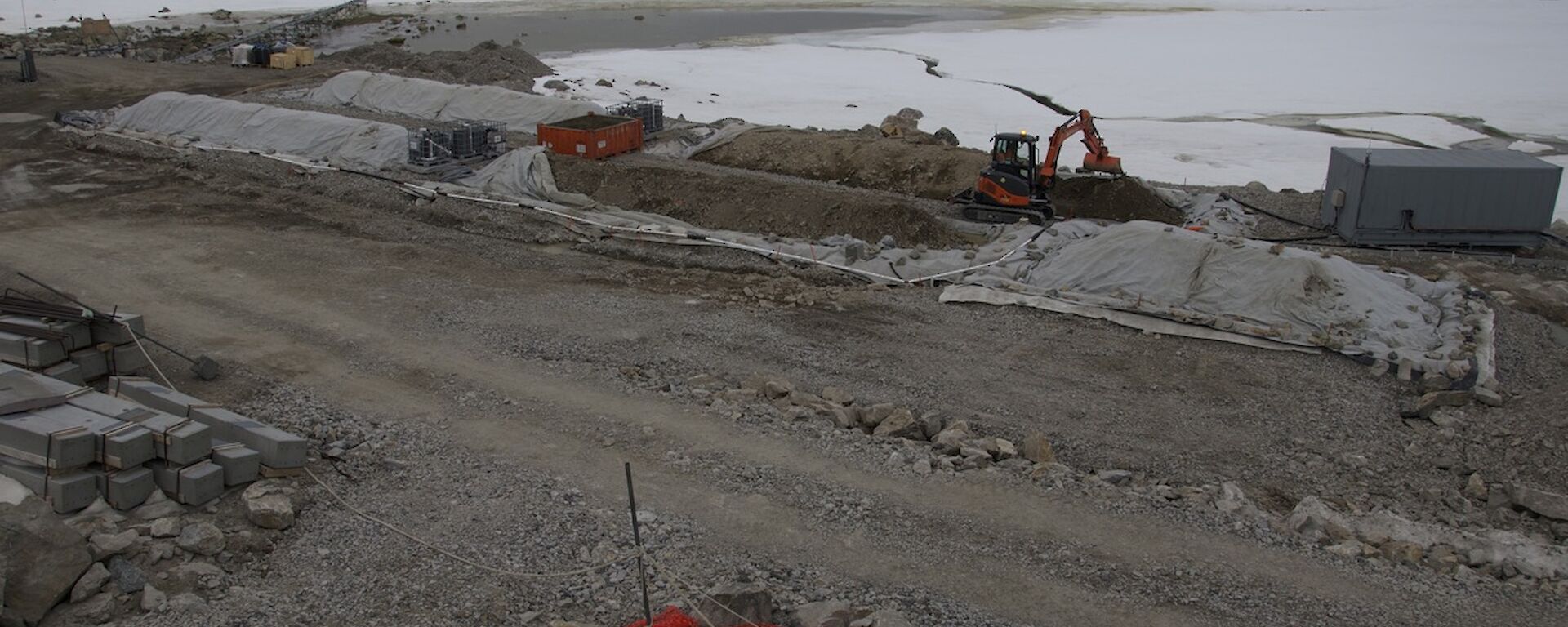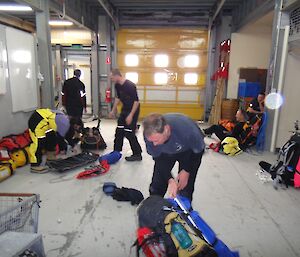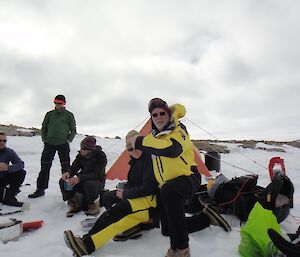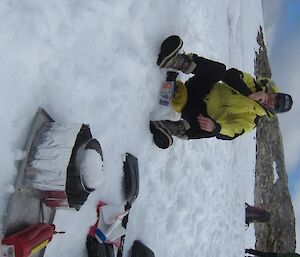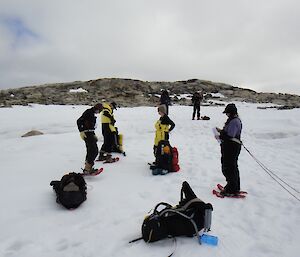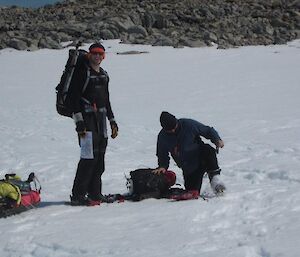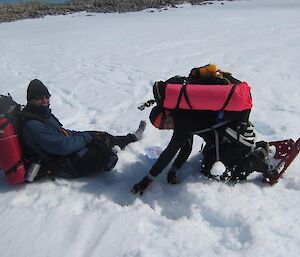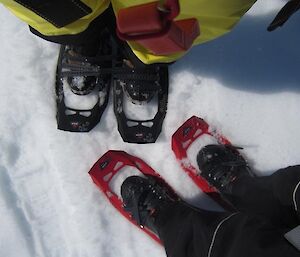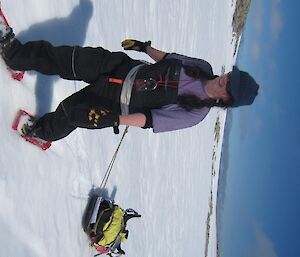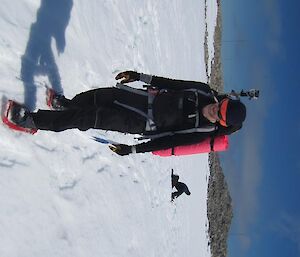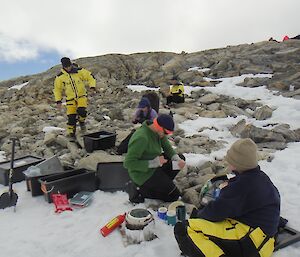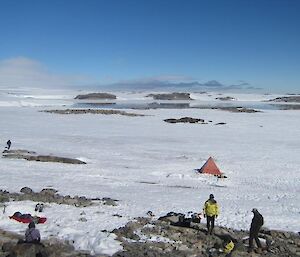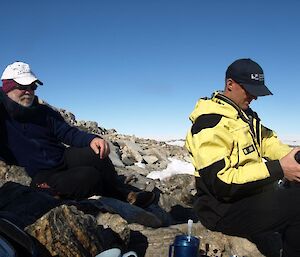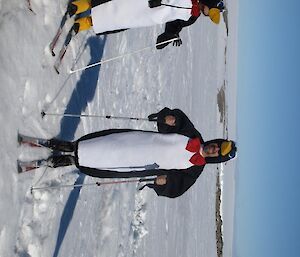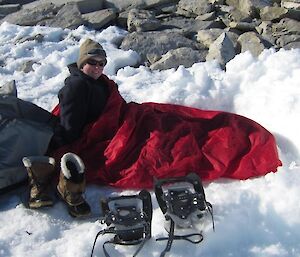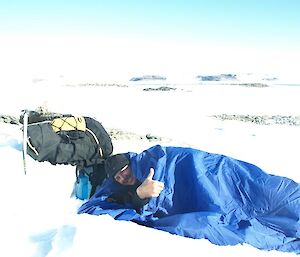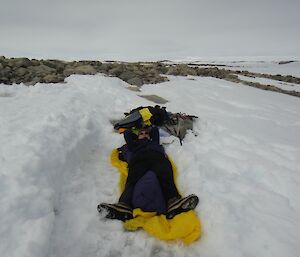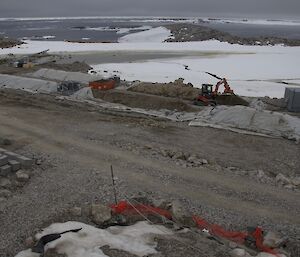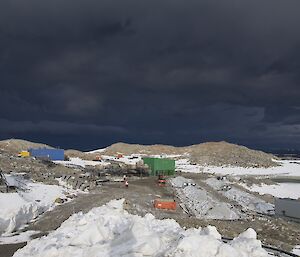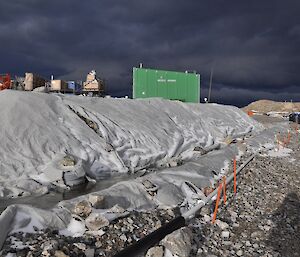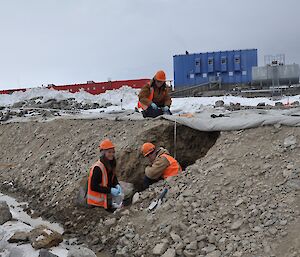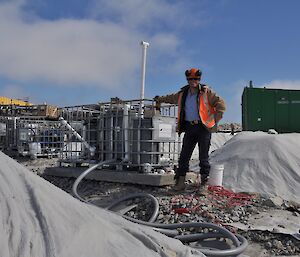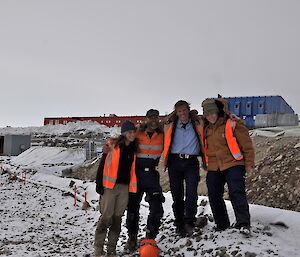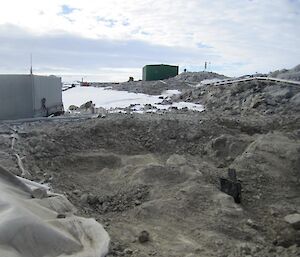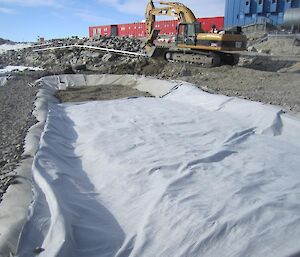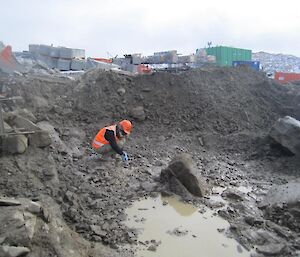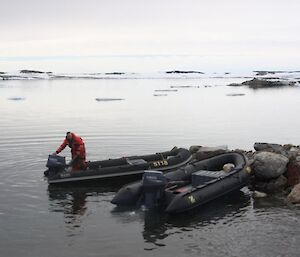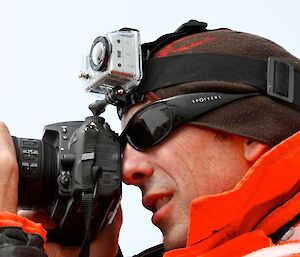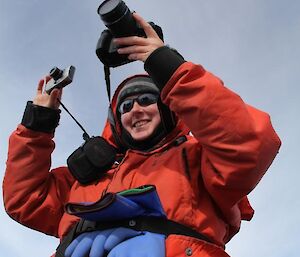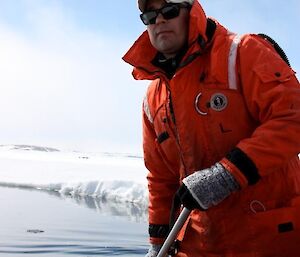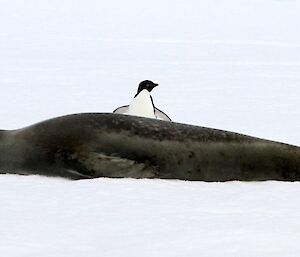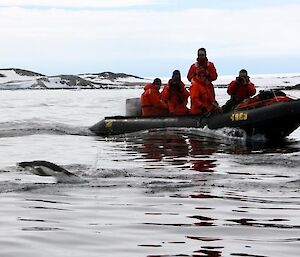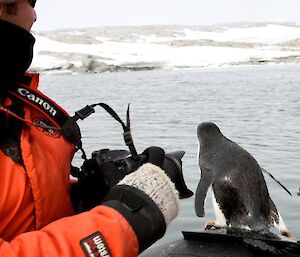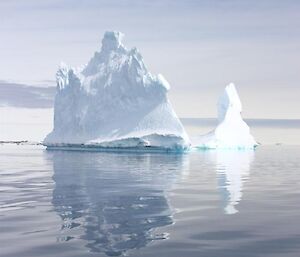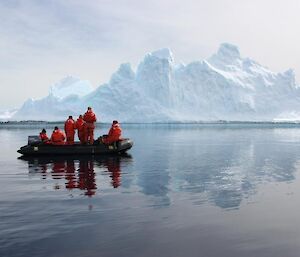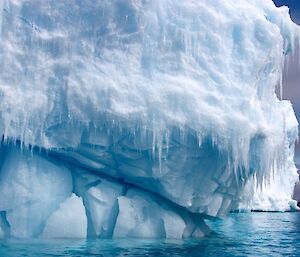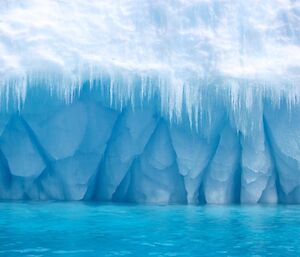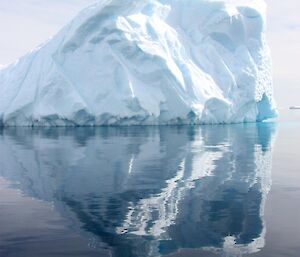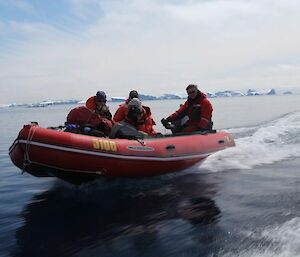On Wednesday 4th January our group headed out for their long awaited survival training. After much ado and retrieval of forgotten items, we set off after scones at smoko to our spot on the Bailey Peninsula — a mixture of people carrying backpacks and using sleds. The sun was shining. What more could we all want?
We arrived at our camp in time for lunch and a cup of tea, which was made from snow after a lesson on how to use the stoves.
After lunch we had some practice in setting up a tent in the snow and then we geared up again for the navigation exercise. This involved walking around the peninsula for the afternoon so that we could learn how to use compasses and maps… but I think the main reason was to build up an appetite for the dried rations and to make us tired so we slept well.
We were the first survival training group to try out the new snow shoes that arrived on station at resupply, and with the snow softening they proved to be rather useful. One of the party thought his big feet would do the job well enough… alas, that wasn’t the case. Lucky for Jason he had a trusted friend to dig his boot out while he basked in the sun trying to dry his saturated sock. Unfortunately his boot was sitting in a nice puddle of icy water at the bottom of the hole.
A mid-afternoon rest with some BBQ shapes and chocolate overlooking Shirley Island was needed by some; others threw snowballs at those who were resting. Then it was back to camp for dinner.
We were just finishing off the washing up when we had a group of visitors drop by. There was a group of strange looking penguins — an odd sight as there was a very dominant male, leader of the pack, who was trailed by a small harem of rather good looking young female penguins. This gave a delightful interlude to our evening out!
After the head penguin led off his ladies there wasn’t much left to do but to climb in the bivvy and try to sleep. With the sun still high in the sky this was more of a challenge for some than for others. Not all of us slept so well as the 9.5 hours achieved by our Plant Inspector!
Rising at a leisurely 7 am, a quick pack up of our bivvies, a review of learnings by our Field Training Officer, Ian, and we trudged back to the red shed for a nice hot cuppa and a warm bed.

